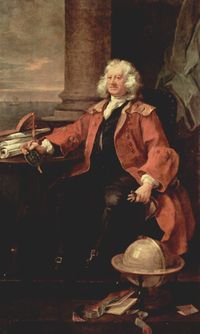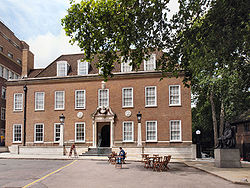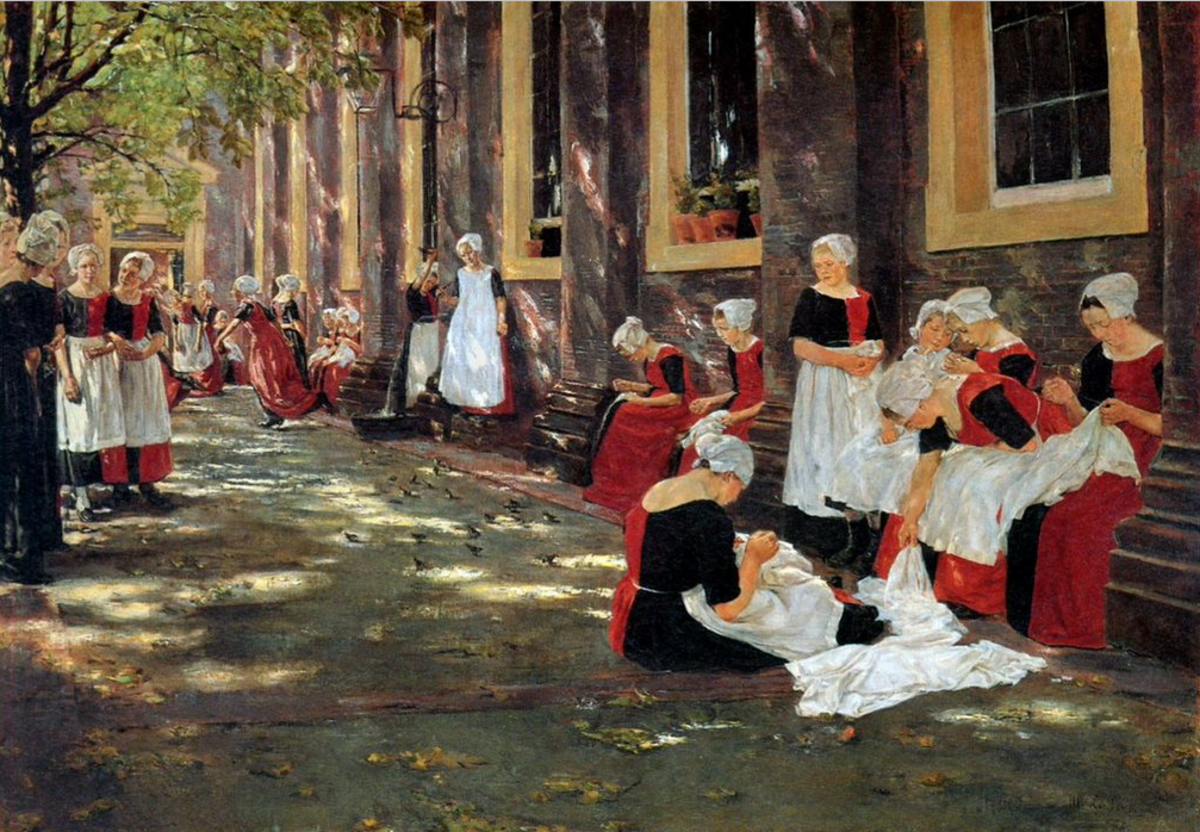Foundling Hospital
Thomas Coram
The Foundling Hospital in London was the brain child of Thomas Coram, an English Sea Captain. After many years at sea, Thomas settled in America where he started a ship building business in Taunton, Massachusetts, 40 miles south of Boston. In 1717 he had the idea to form a colony of British immigrants in Maine, but for an unknown reason the idea was shelved.
General James Oglethorp of the British Army, a politician and philanthropist obtained permission from King George 2nd to open a colony in Georgia, for the poor and distressed of the British population. Captain Thomas Coram was appointed a trustee of the colony, and it opened in 1733, being called The James Oglethorp Georgia Colony. In 1735 he sponsored another colony in Nova Scotia for the unemployed.
The great man

The beginning
Back in London, Thomas Coram was apalled and disgusted by the sight of homeless children on the streets. They had been abandoned by their parents and left to their own devices, starving , falling sick and dying in the gutters. On 17 October 1739 Thomas was granted a Royal Charter by King George 2nd to establish a hospital for these poor children.
In 1742 work started on the hospital and it was competed in 1745. Later an East wing was built and the children were separated, the West Wing housing boys and the East Wing housing the girls. Famous artists and musicians became governors and patrons of the hospital. Among the first governors was the artist William Hogarth. He painted a famous portrait of Thomas Coram which is now in the Foundling Museum, London, the first art gallery to be opened to the public. Others who contributed art were Thomas Gainsborough and Sir Joshua Reynolds with the famous musician Handel writing musical scores for the hospital. Handel allowed the money taken for a performance of his work, 'Messiah' to go to the hospital as well as donating the manuscript of the Halleluja Chorus to the museum. He also composed an anthem especially for a performance at the Hospital, now called the 'Foundling Hospital Anthem.'
Many children
There were so many children to be housed in the hospital that it became impossible to take them all, and a system of elimination was devised. A sack of coloured discs was used to select the inmates. If the disc drawn out of the sack was black, then the balloted child was refused entry. If the disc drawn out was white, the child was allowed in, and if the disc was red, then that child was the next to be admitted if an inmate died. It was a cruel system and one can imagine the anguish of those refused entry. The children in the home, because it was more a home than a hospital, lived under a strict regime. Old photographs in Victorian times show them all dressed in the same uniforms, lined up neatly, boys separated from girls, being marched in to their lessons. They were given everything they needed, clothed, fed and kept clean and they attended church. The only thing they lacked was the love of a family, and listening to ex pupils of the home, this was the thing they wished for more than anything else.
Once the children were accepted, the young ones were sent outside the hospital to wet nurses to be raised for the first five years. At the age of sixteen the girls were found places in the houses of gentry, where they served an apprenticeship as maids and servants. When the boys reached fourteen, they were employed in a large variety of occupations, serving a seven years apprenticeship.
Foundling Museum

Museum
The original building was pulled down in 1926, but its work with vulnerable children was continued under the name "Thomas Coram Foundation for Children". The Foundling Museum is located in Brunswick Square. It was built in 1935 and incorporates architectural features of the original interiors from the first Foundling Hospital, built in 1741. The current building served as the London headquarters after the child care operation was moved out to the countryside.
The museum not only traces the history of the hospital and the work of Thomas Coram, but also houses the 'Foundling Hospital Art Collection' as well as the 'Coke Handel Collection,' the world's greatest private collection of Handel memorabilia.
The Foundling Museum was set up as a separate charitable organisation in 1998. After a major building refurbishment it opened to the public as a state-of-the-art museum in June 2004.






